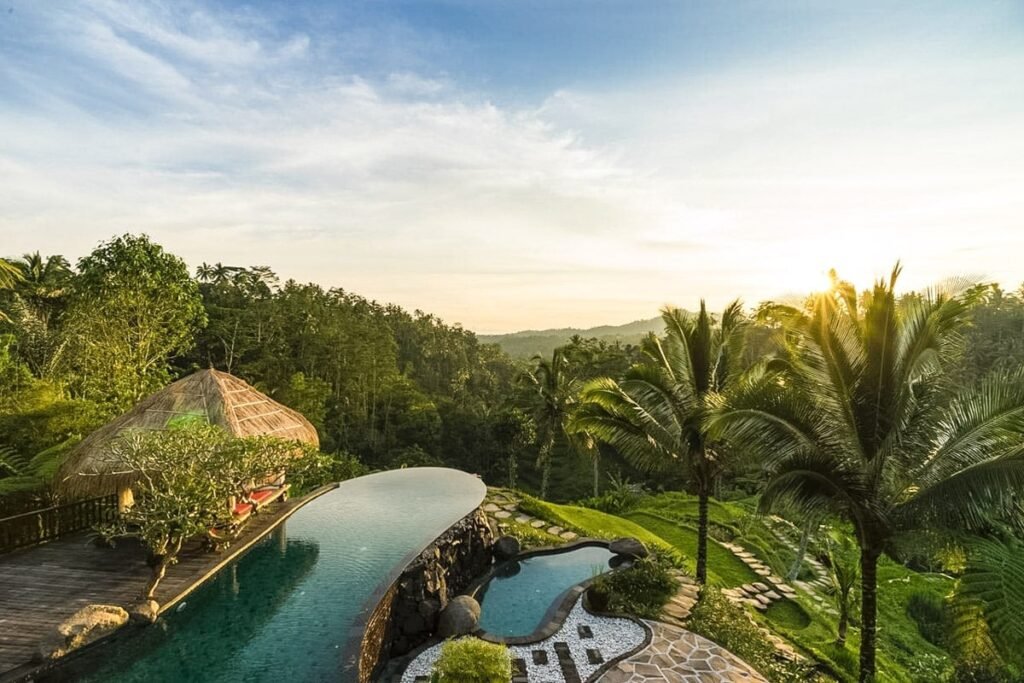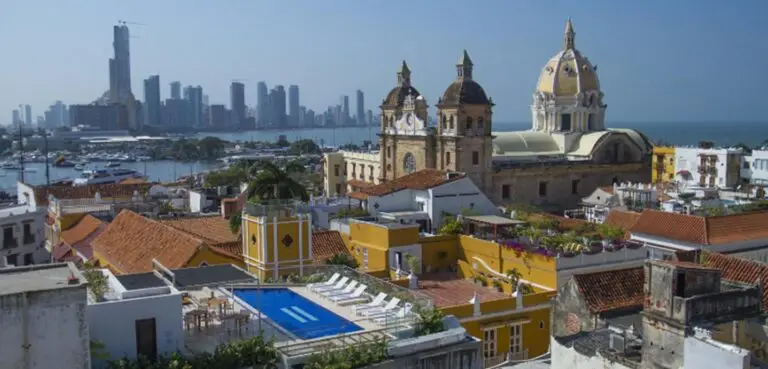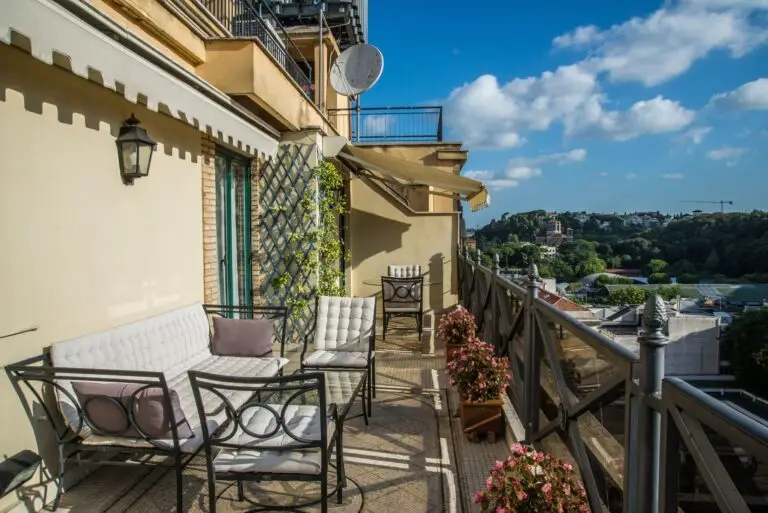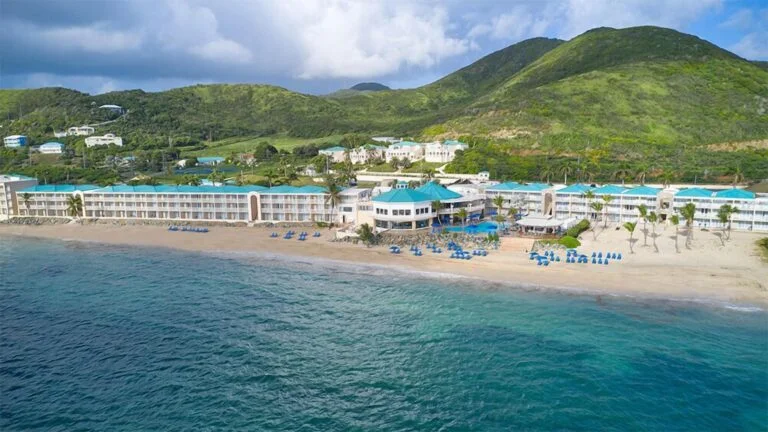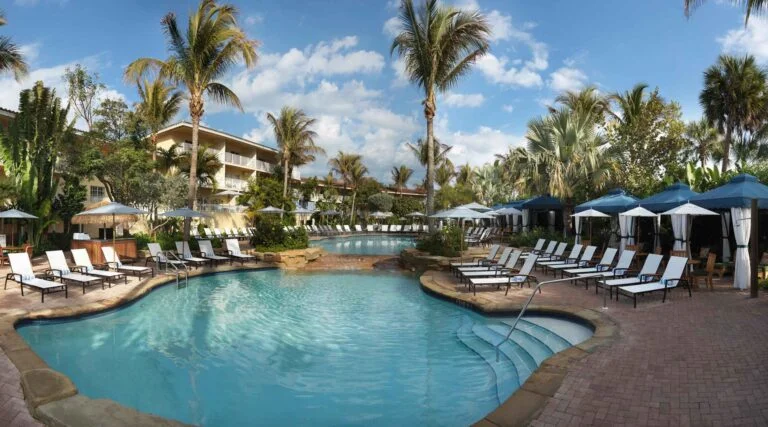Welcome to the tropical haven of Bali, where lush landscapes, pristine beaches, and captivating cultural experiences converge to create a dreamy escape. As you embark on a journey to this Indonesian gem, allow us to unveil the crème de la crème of luxury resorts that will pamper you with opulence and deliver unforgettable memories. Whether you seek a serene sanctuary or an action-packed getaway, these 10 luxury resorts promise to deliver exceptional experiences that will leave you yearning for more.
AYANA Resort and Spa Bali
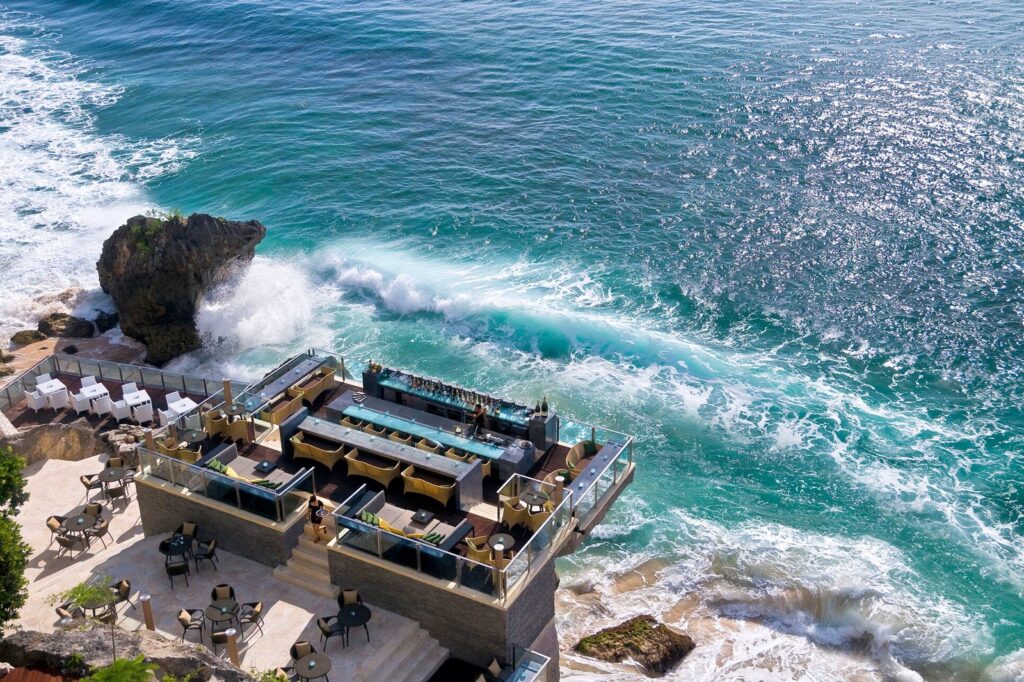
Introduction:
Nestled atop the dramatic cliffs of Jimbaran Bay, AYANA Resort and Spa Bali presents an enchanting retreat where luxury meets natural beauty. The resort boasts a sprawling property that overlooks the Indian Ocean, offering breathtaking views and exclusive beach access.
Pros:
- Exquisite clifftop infinity pools
- World-class Rock Bar with sunset vistas
- Stunning private villas with plunge pools
- Impeccable service and hospitality
Cons:
- High-end dining can be pricey
- Some areas of the resort may require transportation due to its vastness
Best Thing About AYANA Resort and Spa Bali:
The world-renowned Rock Bar, suspended above the ocean on natural rocks, serves as a quintessential spot for sunset cocktails and panoramic ocean views that will leave you in awe.
Four Seasons Resort Bali at Sayan
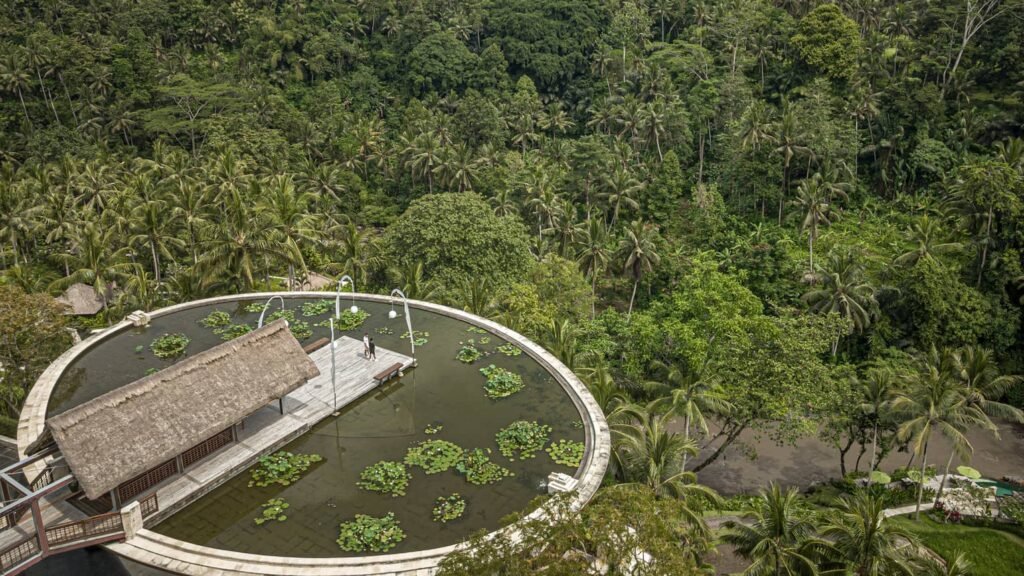
Introduction:
Tucked away amidst lush rainforests and the sacred Ayung River, the Four Seasons Resort Bali at Sayan is an oasis of tranquility. Embrace nature’s beauty and experience authentic Balinese culture while relishing top-notch amenities.
Pros:
- Unique treetop dining experience
- Luxurious suites and villas with plunge pools
- Award-winning spa with holistic treatments
- Complimentary yoga classes and cultural activities
Cons:
- Limited nightlife options on-site
- Prices may be higher compared to other resorts in the area
Best Thing About Four Seasons Resort Bali at Sayan:
The mesmerizing treetop dining experience at the Ayung Terrace allows you to savor delectable cuisine while being surrounded by the sights and sounds of the rainforest.
COMO Uma Ubud
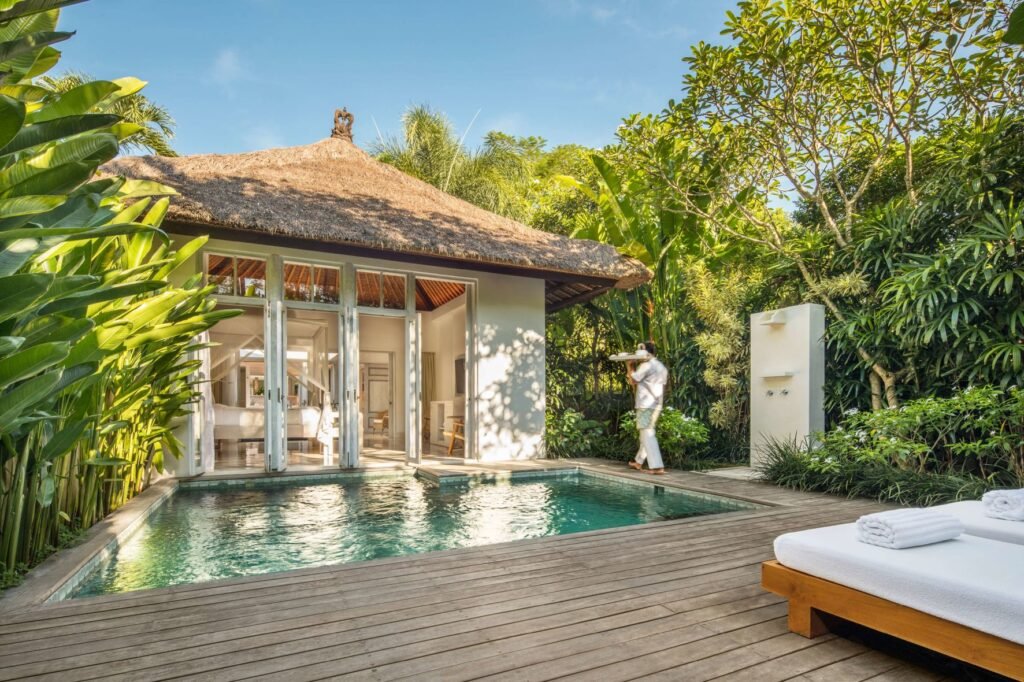
Introduction:
Nestled in the heart of Ubud, COMO Uma Ubud offers a serene escape characterized by contemporary Asian design and lush landscapes. This intimate resort provides a perfect blend of relaxation and cultural exploration.
Pros:
- Tranquil location overlooking Tjampuhan Valley
- Holistic wellness experiences
- Personalized yoga and meditation sessions
- Delicious farm-to-table cuisine
Cons:
- Limited children-friendly activities
- Some suites do not have private pools
Best Thing About COMO Uma Ubud:
The resort’s holistic wellness approach, combined with expertly crafted spa treatments and yoga classes, ensures a rejuvenating experience that nurtures both the body and soul.
Mulia Resort Nusa Dua
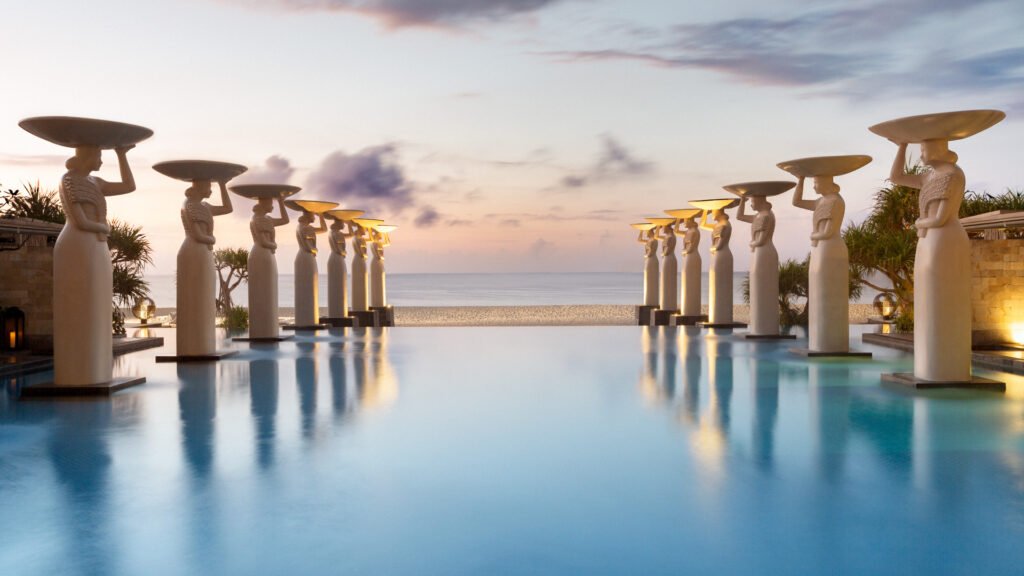
Introduction:
For those seeking a lavish beachfront experience, Mulia Resort in Nusa Dua delivers in abundance. With pristine white sands and azure waters, this resort presents the ultimate luxury beach retreat.
Pros:
- Expansive swimming pools, including a spectacular oceanfront infinity pool
- Luxurious suites with contemporary amenities
- Multiple dining options catering to diverse tastes
- Exclusive beach cabanas and water sports
Cons:
- Limited nightlife and entertainment options within the resort
- Some rooms may not offer direct ocean views
Best Thing About Mulia Resort Nusa Dua:
The stunning oceanfront infinity pool, seemingly blending with the sea, creates a surreal atmosphere, perfect for lounging and soaking up the sun.
Viceroy Bali
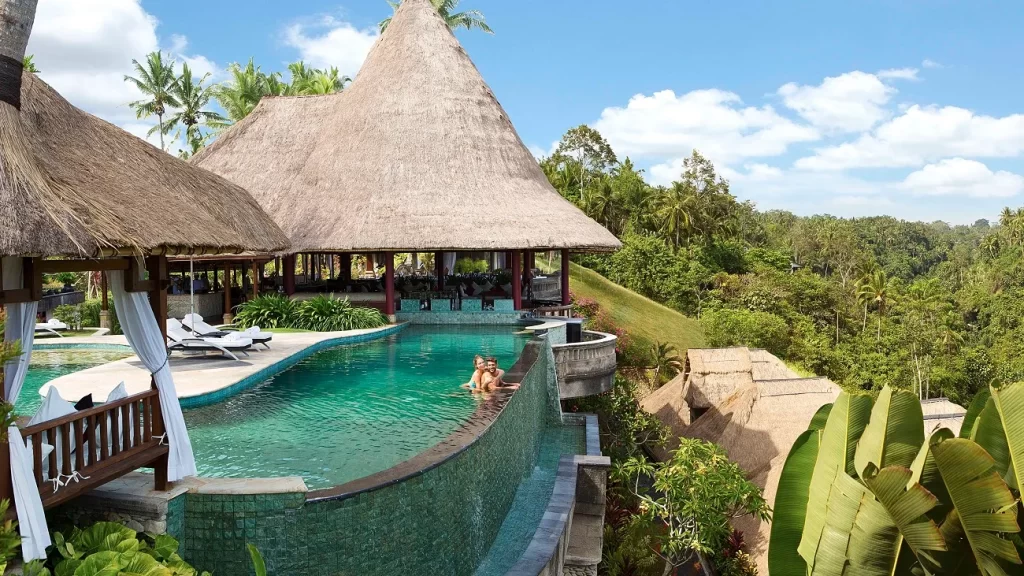
Introduction:
Perched on the verdant hills of Ubud, Viceroy Bali epitomizes opulence, offering an intimate and secluded escape amidst the island’s lush rainforests. This boutique resort promises a private haven for discerning travelers.
Pros:
- Luxurious private pool villas with valley views
- Exquisite dining experiences at the award-winning CasCades Restaurant
- Personalized butler service
- Lavish spa treatments inspired by Balinese traditions
Cons:
- Limited on-site recreational facilities
- The resort’s hillside location may not be suitable for guests with mobility issues
Best Thing About Viceroy Bali:
The intimate setting and personalized services make Viceroy Bali a top choice for honeymooners and couples seeking a romantic and exclusive retreat.
The St. Regis Bali Resort
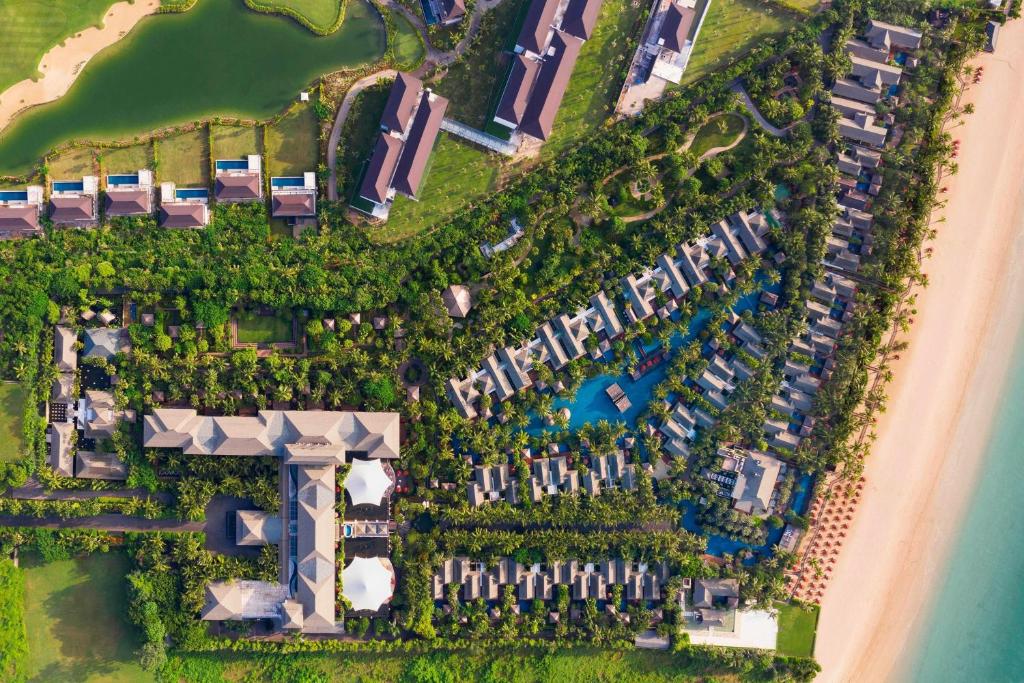
Introduction:
Known for its iconic brand and unparalleled luxury, The St. Regis Bali Resort presents an extraordinary experience on the pristine beach of Nusa Dua. The resort exudes sophistication and promises a seamless fusion of elegance and Balinese charm.
Pros:
- Expansive beachfront with exclusive access to Geger Beach
- Luxurious suites with private terraces or pools
- Signature St. Regis Butler Service
- Exquisite dining at Kayuputi, an award-winning beachfront restaurant
Cons:
- Premium pricing for luxury amenities
- Limited nightlife options within the resort
Best Thing About The St. Regis Bali Resort:
The bespoke St. Regis Butler Service ensures every guest receives personalized attention, adding an extra touch of indulgence to the stay.
Mandapa, a Ritz-Carlton Reserve
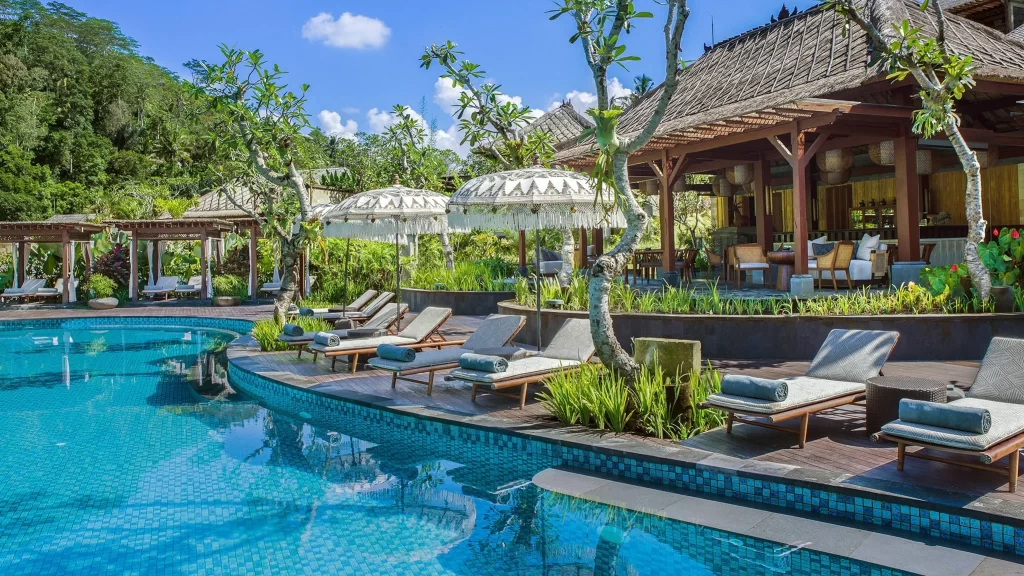
Introduction:
Nestled along the Ayung River in Ubud, Mandapa is a luxurious haven where natural beauty meets cultural richness. The resort offers a seamless blend of traditional Balinese architecture and modern sophistication, creating an enchanting escape for travelers seeking an authentic experience.
Pros:
- Riverside infinity pools with stunning jungle views
- Private villas with butler service and private pools
- Immersive cultural activities and experiences
- World-class dining at the Kubu Restaurant
Cons:
- Some villas may have limited privacy due to their proximity to each other
- The resort’s location, while serene, may require a drive to explore Ubud’s central attractions
Best Thing About Mandapa, a Ritz-Carlton Reserve:
Mandapa’s focus on cultural immersion allows guests to partake in traditional Balinese activities such as rice planting, temple ceremonies, and cooking classes, offering an unforgettable glimpse into local life.
Soori Bali
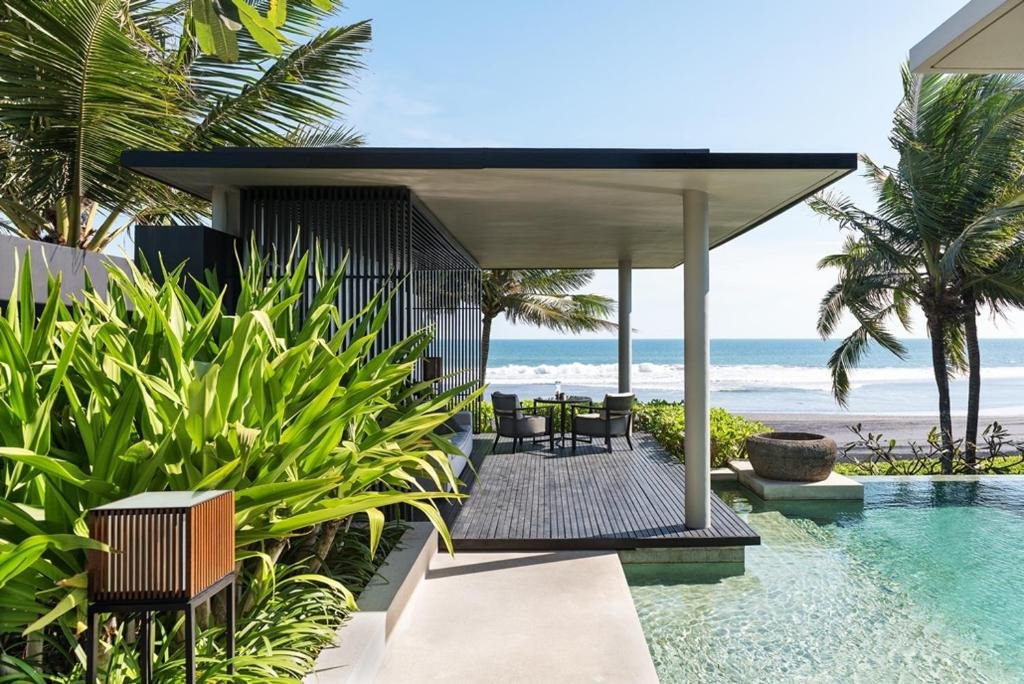
Introduction:
Located in the tranquil Tabanan regency, Soori Bali offers an exclusive beachfront escape amidst lush rice terraces and volcanic mountains. This luxury resort emphasizes sustainability, making it an ideal choice for environmentally-conscious travelers.
Pros:
- Beachfront infinity pool with panoramic ocean views
- Chic and eco-friendly villas with private pools
- Complimentary yoga classes and wellness programs
- Gourmet dining featuring farm-to-table cuisine
Cons:
- Limited shopping and dining options outside the resort
- The secluded location may not be suitable for guests seeking a vibrant nightlife scene
Best Thing About Soori Bali:
The resort’s dedication to sustainability and the pristine natural surroundings make Soori Bali an eco-luxury retreat, offering a unique and environmentally-aware experience.
Bvlgari Resort Bali
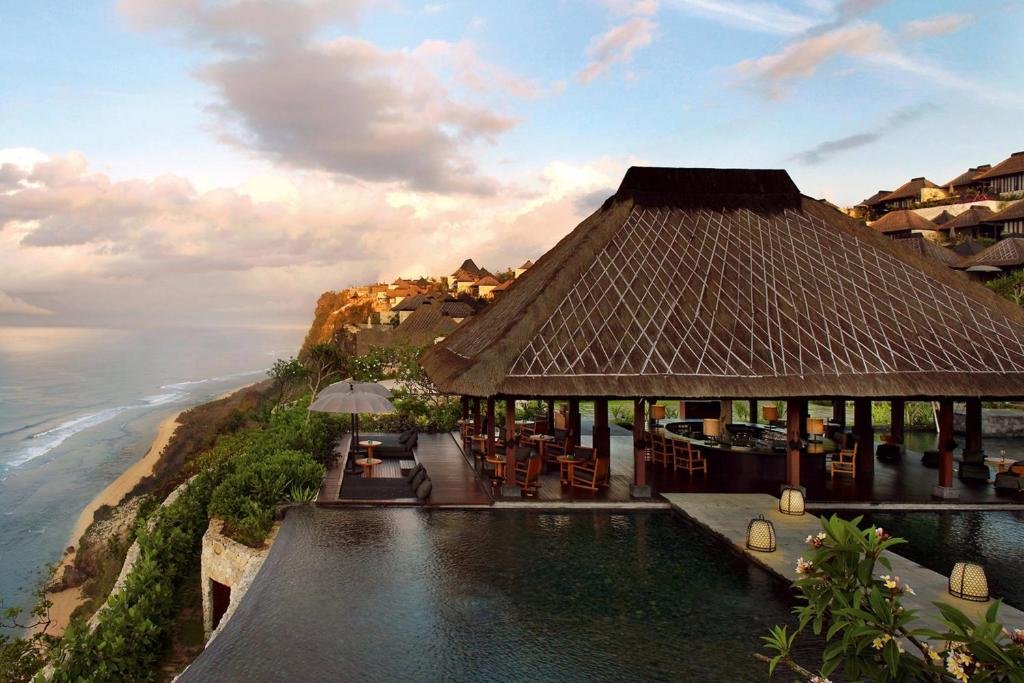
Introduction:
Perched on a cliff above the Indian Ocean in Uluwatu, the Bvlgari Resort Bali boasts stunning contemporary design and unparalleled ocean vistas. This ultra-luxurious retreat is perfect for those seeking a blend of modern sophistication and breathtaking natural beauty.
Pros:
- Cliff-top infinity pool with mesmerizing ocean views
- Elegant villas with private plunge pools and garden courtyards
- Italian-inspired dining at Il Ristorante – Luca Fantin
- Exclusive beach club accessible via an inclined elevator
Cons:
- The resort’s exclusivity may come with a higher price tag
- Limited nearby attractions, requiring transportation for exploring other areas of Bali
Best Thing About Bvlgari Resort Bali:
The secluded location and the elegant Italian-inspired design provide an atmosphere of sophistication and serenity, making it an ideal destination for a romantic escape.
The Mulia – Nusa Dua
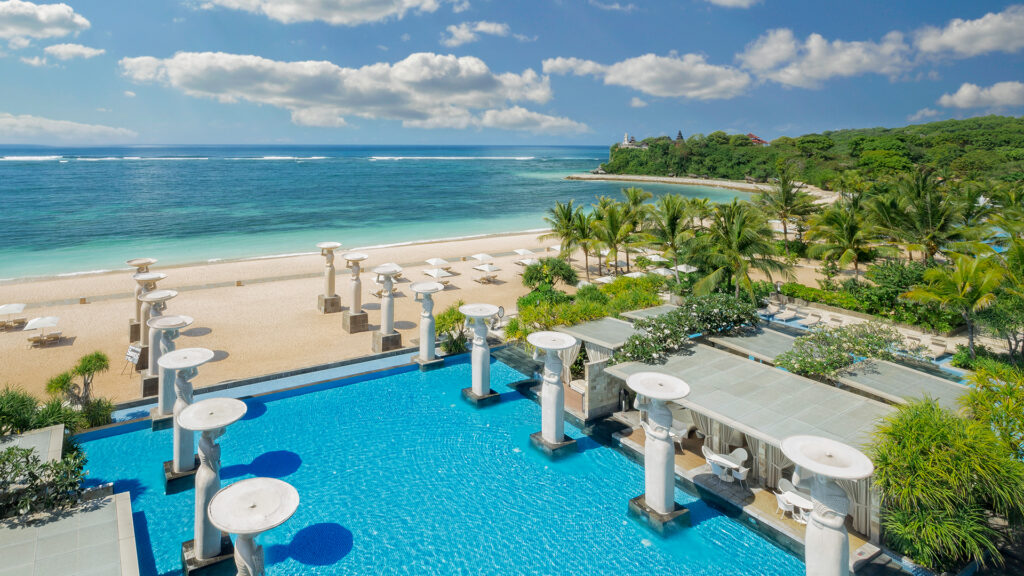
Introduction:
As the sister property of Mulia Resort Nusa Dua, The Mulia is an all-suite luxury resort offering extravagant accommodations and unparalleled oceanfront views. This opulent retreat redefines luxury in the heart of Nusa Dua.
Pros:
- Lavish suites with private terraces and Jacuzzis
- Extensive swimming pools with swim-up bars
- A wide array of dining options, from traditional Indonesian cuisine to international favorites
- The stunning Mulia Beach with its pristine white sands
Cons:
- Higher price point for top-tier suites and services
- Some guests may find the resort’s size overwhelming
Best Thing About The Mulia – Nusa Dua:
The resort’s expansive beachfront and array of pools, including the signature oceanfront Oasis Pool, offer guests the perfect setting to relax and soak in the tropical splendor.
FAQs
Q: What are the top must-visit off-the-beaten-path attractions in Bali?
A: Bali, renowned for its famous destinations, also hides some lesser-known treasures that promise unforgettable experiences. One such gem is Tirta Gangga, a serene water palace located in East Bali. This enchanting place features immaculate gardens, tranquil pools, and impressive statues that tell stories of ancient Balinese legends. Nungnung Waterfall, nestled in the central highlands, offers a mesmerizing 50-meter cascade surrounded by lush foliage and a natural pool perfect for a refreshing dip. For those seeking a more authentic Balinese experience, the Sidemen Valley in East Bali captivates visitors with its picturesque terraced rice fields, quaint traditional villages, and scenic trekking routes that lead through pristine natural landscapes.
Q: What unique cultural experiences can I participate in while in Bali?
A: Bali, a melting pot of rich traditions and cultural heritage, offers a plethora of unique experiences for travelers seeking to immerse themselves in local customs. Witnessing traditional Balinese dance performances is an enchanting way to delve into the island’s artistic heritage. The Barong Dance and Kecak Fire Dance, for instance, are captivating displays of mythology and folklore brought to life through mesmerizing movements and music. Engaging in a Balinese cooking class provides an opportunity to master the art of preparing authentic dishes, using locally-sourced ingredients and traditional cooking techniques. Furthermore, participating in temple ceremonies is an incredibly spiritual experience, where one can observe the island’s deeply-rooted Hindu traditions. Events like the Galungan festival showcase vibrant processions, intricate offerings, and Balinese devotion at its finest.
Q: How can I ensure a responsible and sustainable travel experience in Bali?
A: As responsible tourism gains importance, Bali offers various avenues for travelers to contribute positively to the environment and local communities. Opting for eco-friendly accommodations that prioritize sustainability is an excellent start. Travelers can reduce plastic waste by carrying reusable water bottles and shopping bags and supporting establishments that avoid single-use plastics. Engaging in beach clean-up activities organized by local communities and environmental groups also helps protect Bali’s pristine shores. Respecting local customs and traditions fosters cultural preservation, while supporting local artisans and businesses sustains the island’s unique arts and crafts heritage. Additionally, responsible tourists can minimize their environmental impact by choosing eco-conscious tour operators and being mindful of their waste and energy consumption throughout their stay.
Q: What are the best options for island-hopping in Bali?
A: Exploring the neighboring islands is a delightful way to expand your Bali adventure. The Nusa Islands, comprising Nusa Penida, Nusa Lembongan, and Nusa Ceningan, are easily accessible by speedboat from Sanur or Padang Bai. Nusa Penida, the largest of the three, lures visitors with its rugged cliffs, pristine beaches, and famous viewpoints like Kelingking Beach. Nusa Lembongan is perfect for snorkeling, diving, and relaxing on sandy shores, while the smaller Nusa Ceningan offers a tranquil escape with beautiful coastal views. Another island-hopping option is to visit the Gili Islands, situated off the coast of Lombok but reachable by fast boat from Bali. The Gili Islands comprise Gili Trawangan, Gili Meno, and Gili Air, each offering unique experiences like vibrant nightlife, turtle sanctuaries, and pristine snorkeling spots, respectively.
Q: Which lesser-known beaches in Bali offer a quieter and more serene ambiance?
A: While Bali is famous for its popular beaches, several lesser-known coastal gems offer a more tranquil experience. Nyang Nyang Beach, hidden away in the Bukit Peninsula, requires a short hike down a cliff but rewards visitors with vast stretches of untouched sand and crashing waves. Green Bowl Beach, located in the southern part of the island, is accessible via a steep staircase, ensuring a secluded and peaceful atmosphere. This hidden beach features impressive natural caves and a serene shoreline for beachcombers and surf enthusiasts seeking solitude. Pasir Putih, also known as White Sand Beach, in Karangasem regency, is a stunning stretch of black sand bordered by coconut trees, providing a serene escape from the crowds of more popular beaches.
Q: What are the most scenic spots for witnessing Bali’s stunning sunrises and sunsets?
A: Bali’s diverse landscapes create an abundance of breathtaking locations to witness both sunrises and sunsets. For sunrise, consider an early morning trek to Mount Batur, an active volcano offering a spectacular panorama from its summit. Alternatively, atop the cliffs of Uluwatu, perched on the southwestern tip of Bali, visitors can catch the rising sun over the Indian Ocean while watching the Kecak Dance at the iconic Uluwatu Temple. Sunset seekers will be captivated by the dramatic silhouette of Tanah Lot Temple, a sea temple situated on a rocky outcrop off the western coast. Canggu, a trendy coastal town, also boasts beachside bars and cafes with fantastic sunset views, creating the perfect ambiance for sipping cocktails while the sun dips below the horizon.
Q: What is the best time to visit Bali to avoid the peak tourist season and rainy weather?
A: Bali’s weather can significantly influence the travel experience, and the best time to visit depends on personal preferences. To avoid the peak tourist season and enjoy milder weather, consider traveling during the shoulder months of April to June and September to November. During these periods, the crowds are thinner, hotel rates may be more reasonable, and the weather is generally pleasant with lower chances of heavy rainfall. July and August are the busiest months in Bali, attracting tourists from around the world, which can lead to higher accommodation prices and crowded attractions. The monsoon season occurs from December to February, with the possibility of heavy rainfall and occasional storms, making it a less favorable time for outdoor activities and exploring the island.
Q: Where can I experience authentic Balinese art and crafts?
A: Bali’s vibrant artistic scene provides ample opportunities to explore and appreciate traditional crafts. One of the best places to immerse yourself in Balinese art is Ubud, the cultural heart of the island. The town is dotted with art galleries showcasing paintings, sculptures, and contemporary artworks by local and international artists. Ubud’s bustling market also offers an array of handicrafts, such as intricately carved wooden masks, batik textiles, and handwoven baskets. For wood carvings, the village of Mas is renowned for its skilled artisans who create elaborate sculptures and intricate wooden figurines. Celuk, on the other hand, is famous for its exquisite silver jewelry crafted by talented silversmiths. Visitors can watch these craftsmen at work and even commission custom-made pieces to take home as unique souvenirs.
Q: What are the most thrilling outdoor activities for adventure enthusiasts in Bali?
A: Bali caters to adventure enthusiasts with a plethora of adrenaline-pumping outdoor activities. White-water rafting on the Ayung River is an exhilarating experience that takes you through lush jungle landscapes and thrilling rapids. For a deeper immersion in nature, jungle trekking to hidden waterfalls like Sekumpul or Gitgit offers breathtaking scenery and a refreshing escape from the heat. For those seeking a more challenging adventure, hiking Mount Agung or Mount Batur promises a rewarding sunrise view from the summit and a sense of accomplishment. Additionally, Bali’s diverse coastline provides excellent opportunities for surfing, with famous surf spots like Uluwatu, Padang Padang, and Canggu offering world-class waves for surfers of all levels.
Q: How can I respect local customs and traditions while visiting temples in Bali?
A: Dress modestly, wear a sarong and sash provided at the entrance, do not point your feet towards the shrines, and maintain a respectful and quiet demeanor during ceremonies.
Q: Which areas in Bali offer the best shopping experiences for unique souvenirs and artisanal products?
A: Explore the streets of Ubud for handicrafts, Seminyak for designer boutiques, and Sukawati Market for traditional Balinese souvenirs and textiles.
Q: What are the best places to indulge in traditional Balinese cuisine?
A: Savor authentic Balinese dishes at Warungs (local eateries), try the famous Babi Guling (suckling pig), and sample Bebek Betutu (slow-cooked duck) for a taste of local flavors.
Q: How can I explore Bali’s marine life while practicing responsible tourism?
A: Engage in responsible snorkeling or diving tours that prioritize marine conservation, such as visiting the Menjangan Island Marine Park or the Amed and Tulamben dive sites.
Q: What unique wellness and spiritual experiences are available in Bali?
A: Embark on a spiritual journey with yoga and meditation retreats in Ubud, experience water purification rituals at Tirta Empul Temple, or rejuvenate with holistic spa treatments.
Q: What are the transportation options for traveling between different regions in Bali?
A: Utilize private drivers, ride-hailing apps, or rent a scooter for short distances. For longer journeys, consider shuttle services or domestic flights between Bali and other Indonesian islands.
Q: What should I know about Bali’s environmental efforts and initiatives?
A: Bali has been implementing various environmental initiatives, such as banning single-use plastics, promoting eco-friendly tourism practices, and conducting regular beach clean-up campaigns.
Q: How can I experience the traditional Balinese lifestyle in rural villages?
A: Stay in homestays or guesthouses in villages like Sidemen or Munduk, interact with locals, participate in cultural activities, and witness traditional ceremonies.
Q: What are the precautions I should take while exploring Bali’s natural attractions?
A: Carry insect repellent, wear comfortable footwear for trekking, stay hydrated, and be cautious of changing tides and currents when visiting waterfalls or beaches.
Q: What are the best ways to learn about Bali’s history and ancient temples?
A: Engage in guided tours with knowledgeable local guides, visit historical sites like Goa Gajah (Elephant Cave) or Taman Ayun Temple, and explore the Bali Museum in Denpasar.
Q: How can I give back to the local communities and contribute to Bali’s sustainable development?
A: Support local social enterprises, participate in community-based tourism activities, and donate to reputable organizations working on environmental conservation and social welfare projects in Bali.
Q: What are the best ways to learn about Bali’s history and ancient temples?
A: To delve into Bali’s rich history and ancient temples, consider engaging in guided tours led by knowledgeable local guides. These tours often provide insightful narratives about the significance and cultural importance of the temples. Historical sites like Goa Gajah (Elephant Cave) near Ubud showcase intricate carvings and ancient relics dating back to the 11th century. Taman Ayun Temple, a UNESCO World Heritage Site, offers a glimpse into Bali’s royal past with its stunning architecture and gardens. Additionally, the Bali Museum in Denpasar is a treasure trove of historical artifacts, traditional art pieces, and ethnographic exhibits that offer a comprehensive understanding of the island’s heritage.
Conclusion
In the paradise of Bali, these ten luxury resorts elevate the concept of indulgence and pampering to new heights. Each resort possesses a unique charm and an array of amenities to cater to your desires, ensuring an unforgettable experience. Whether you seek a clifftop retreat, a lush rainforest sanctuary, or a beachfront escape, these luxurious havens promise to deliver unparalleled comfort and memories to cherish for a lifetime. So, embark on your Bali journey, and let these remarkable resorts transport you to a realm of luxury and tranquility.
Also Read: best luxury resorts in the Bahamas

